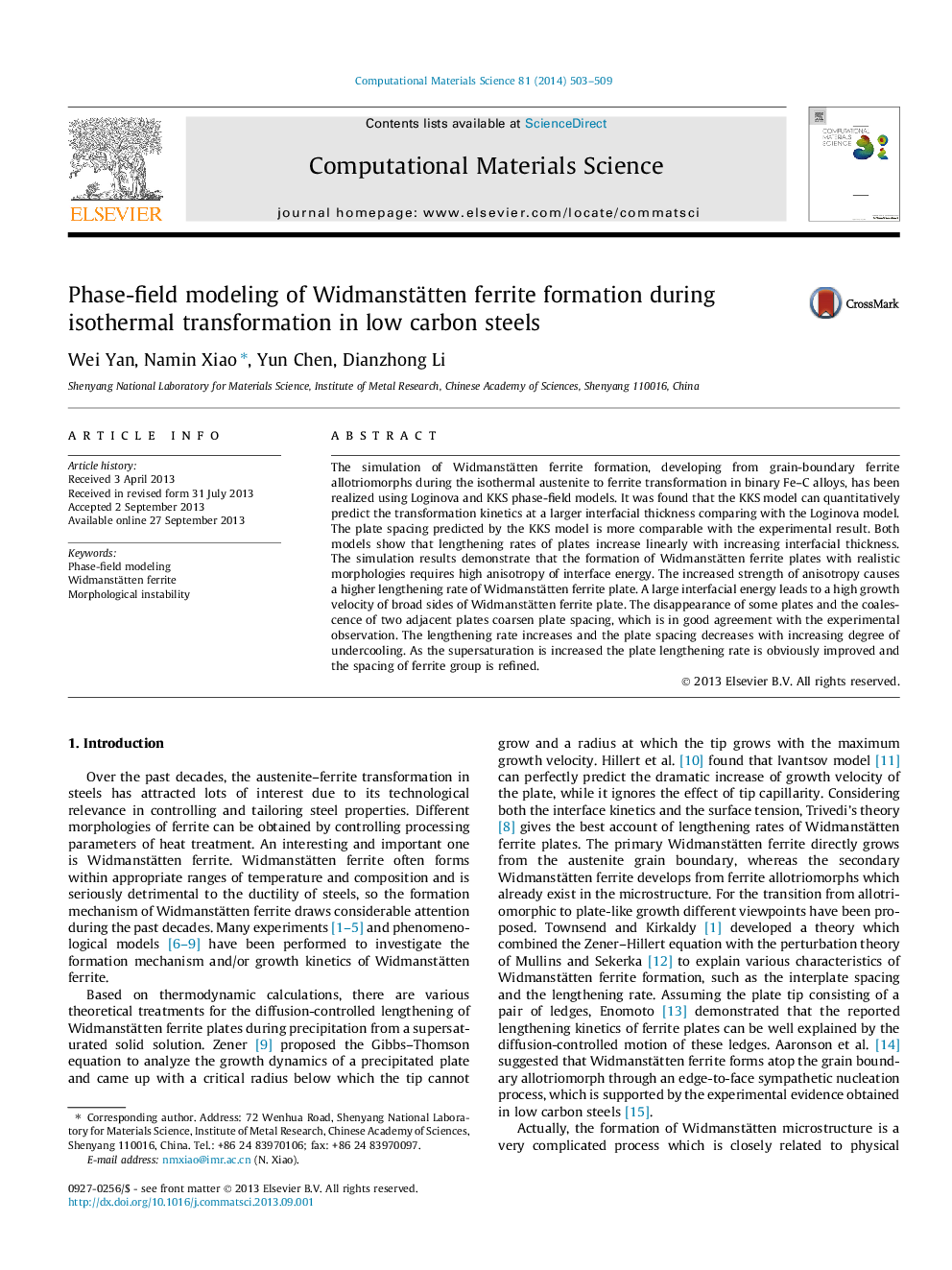| Article ID | Journal | Published Year | Pages | File Type |
|---|---|---|---|---|
| 1560890 | Computational Materials Science | 2014 | 7 Pages |
•Phase-field modelling of Widmanstätten ferrite formation.•The KKS phase-field model can quantitatively predict the transformation kinetics.•The evolution of morphology, lengthening rate and plate spacing were investigated.•The formation mechanism of Widmanstätten ferrite was further revealed.
The simulation of Widmanstätten ferrite formation, developing from grain-boundary ferrite allotriomorphs during the isothermal austenite to ferrite transformation in binary Fe–C alloys, has been realized using Loginova and KKS phase-field models. It was found that the KKS model can quantitatively predict the transformation kinetics at a larger interfacial thickness comparing with the Loginova model. The plate spacing predicted by the KKS model is more comparable with the experimental result. Both models show that lengthening rates of plates increase linearly with increasing interfacial thickness. The simulation results demonstrate that the formation of Widmanstätten ferrite plates with realistic morphologies requires high anisotropy of interface energy. The increased strength of anisotropy causes a higher lengthening rate of Widmanstätten ferrite plate. A large interfacial energy leads to a high growth velocity of broad sides of Widmanstätten ferrite plate. The disappearance of some plates and the coalescence of two adjacent plates coarsen plate spacing, which is in good agreement with the experimental observation. The lengthening rate increases and the plate spacing decreases with increasing degree of undercooling. As the supersaturation is increased the plate lengthening rate is obviously improved and the spacing of ferrite group is refined.
